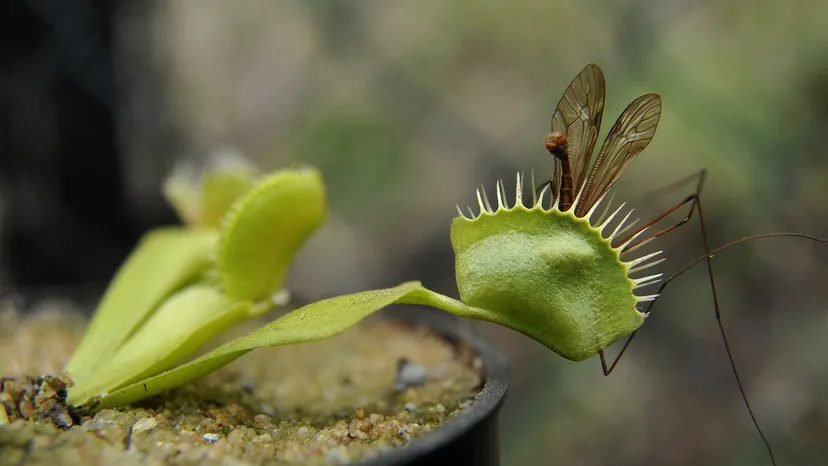If you’re fascinated by unique and unusual plants, few are as intriguing as the Venus flytrap (Dionaea muscipula). Famous for its jaw-like leaves that snap shut to trap insects, this carnivorous plant is both a conversation starter and a rewarding challenge for plant enthusiasts.
Though Venus flytraps are often portrayed as difficult to care for, with the right knowledge and attention, you can successfully nurture one at home. This guide will cover everything you need to know—from understanding its natural habitat to watering, feeding, dormancy, and common pitfalls—so your Venus flytrap thrives and captivates for years.
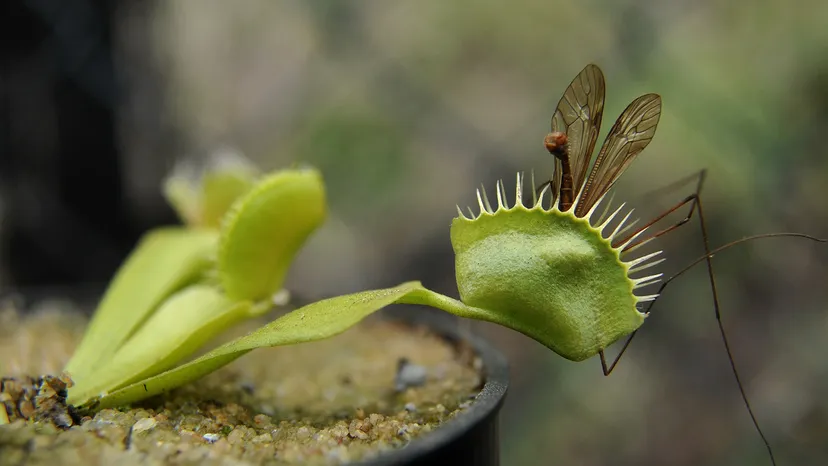
Understanding the Venus Flytrap
Native to the subtropical wetlands of the Carolinas in the United States, Venus flytraps grow in nutrient-poor, acidic, and wet soils. To survive, they’ve evolved to trap and digest insects, gaining essential nutrients like nitrogen and phosphorus.
Key Features:
- Trap Structure: The “trap” is actually a pair of modified leaves with tiny hair-like sensors. When an unsuspecting insect touches these hairs twice, the trap snaps shut in less than a second.
- Size: Traps typically range from 1 to 3 inches wide.
- Lifespan: Individual traps live about 3-4 months, but the plant itself can live for many years if cared for properly.
Because Venus flytraps grow in very specific conditions, replicating some of those elements is key to successful care.
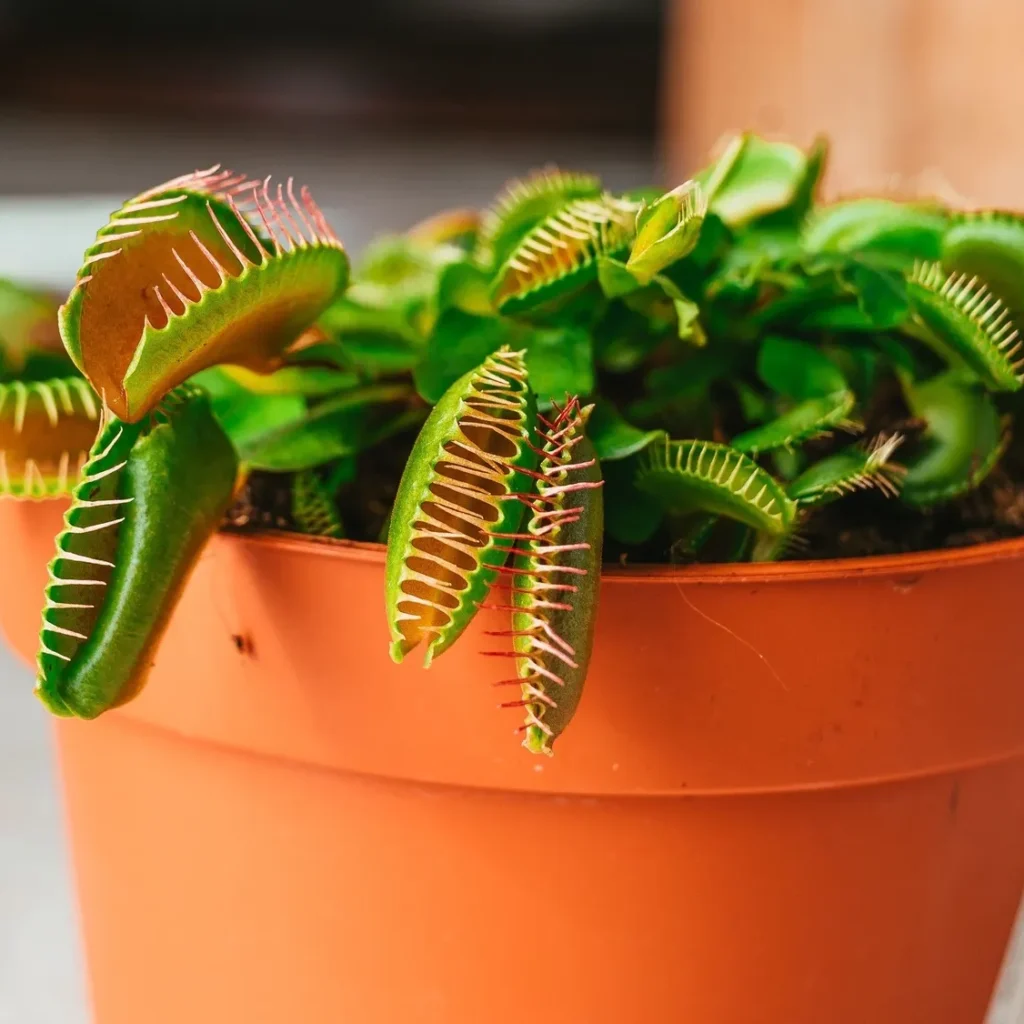
Choosing the Right Location and Pot
Light Requirements
Venus flytraps love bright light and thrive best with at least 4-6 hours of direct sunlight daily. Outdoors, they flourish in sunny spots, while indoors, placing them near a south-facing window is ideal.
If natural sunlight is limited, consider using a full-spectrum grow light for 12-16 hours a day to simulate their native environment.
Potting Medium
The soil is crucial because Venus flytraps require poor, acidic, and well-draining soil. Avoid standard potting mixes that contain fertilizers or minerals.
Recommended soil mix:
- 50% sphagnum peat moss
- 50% perlite or silica sand (avoid quartz sand, as it can contain minerals harmful to the plant)
Avoid regular garden soil or compost, which can suffocate or poison your flytrap.
Pot Selection
Use a plastic or glazed ceramic pot with drainage holes. Terracotta pots are not recommended because they can leach minerals into the soil.
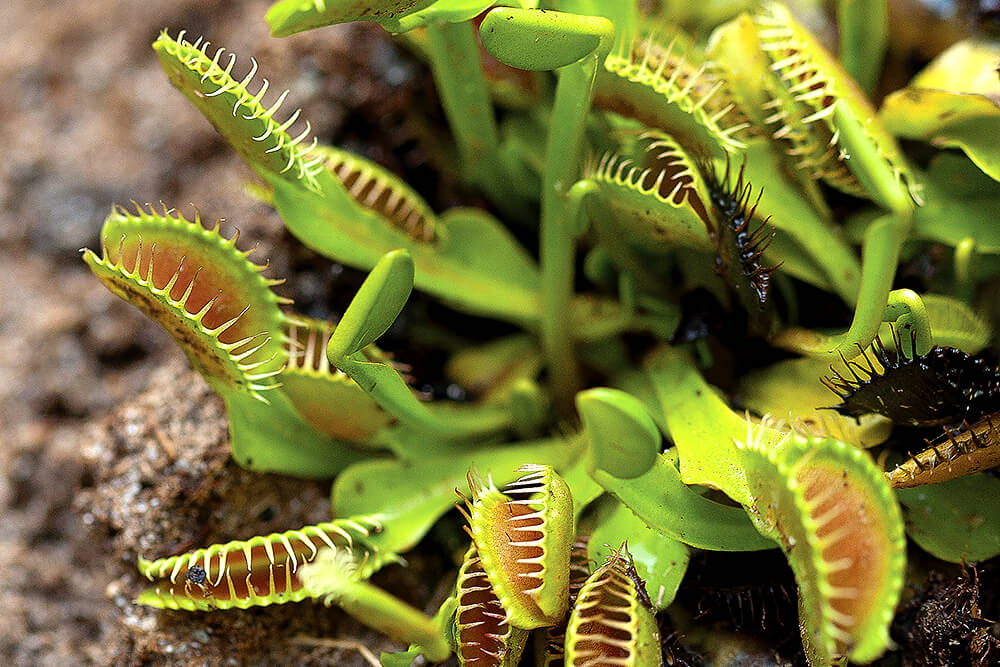
Watering Your Venus Flytrap Correctly
Venus flytraps are highly sensitive to water quality and moisture levels.
Water Quality
Use only distilled water, rainwater, or reverse osmosis water. Tap water usually contains minerals and chemicals like chlorine, fluoride, or salts that can harm your plant.
Watering Method
- Keep the soil consistently moist but not waterlogged.
- A popular method is the tray watering technique: Place your pot in a shallow tray filled with about 1 inch of water and let the plant absorb moisture from the bottom.
- Refill the tray when dry, but avoid letting the plant sit in standing water for weeks.
Avoid Overwatering and Underwatering
- Overwatering causes root rot and leaf blackening.
- Underwatering will make traps shrivel and die prematurely.
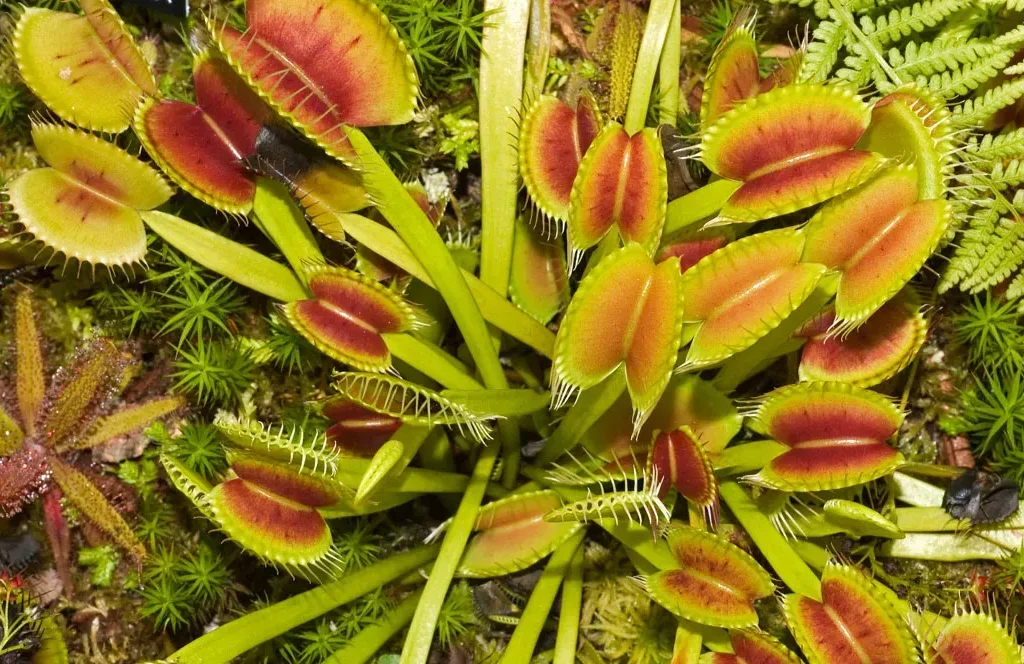
Feeding Your Venus Flytrap
While Venus flytraps get some nutrients from photosynthesis, they rely on insects for vital minerals missing from their poor soil.
Natural Feeding
If your flytrap lives outdoors or near an open window, it will likely catch insects on its own.
Manual Feeding
If indoors without natural insect access, you can feed your Venus flytrap manually:
- Use small live insects like flies, spiders, or ants.
- The insect must be alive or freshly killed; dried or processed insects won’t trigger the trap.
- Feed only one trap at a time to avoid stress.
- Each trap can close 3-4 times before it dies off and is replaced by new leaves.
Important: Do not overfeed. Feeding once every 2-3 weeks is sufficient.
Avoid Human Food
Never feed your Venus flytrap meat, cheese, or any processed food. These can rot and cause fungus or bacteria buildup.
Providing Proper Humidity and Temperature
Humidity
Venus flytraps prefer moderate to high humidity, ideally around 50% or higher.
- If indoor air is dry, especially in winter, consider using a humidity tray or a small humidifier.
- Avoid misting the traps frequently, as this can lead to fungal issues.
Temperature
- During the growing season, Venus flytraps thrive in temperatures between 70°F and 95°F (21°C–35°C).
- They can tolerate short periods of cooler temperatures but should be protected from frost.
Understanding Dormancy: The Key to Long-Term Care
One of the most critical aspects of Venus flytrap care is its dormancy period in winter.
What is Dormancy?
In its natural habitat, the Venus flytrap experiences colder winter months when it slows down growth and sheds many leaves. This rest period is essential for the plant’s health and longevity.
How to Care for Dormancy
- In late fall or early winter, reduce watering and stop feeding.
- Move the plant to a cooler location, ideally between 35°F and 50°F (2°C–10°C), like an unheated garage or a cool basement.
- Keep the soil slightly moist but not soggy.
- Maintain low light levels during dormancy.
Duration
Dormancy lasts about 3-4 months. In early spring, return the plant to warmer temperatures, increase watering, and resume feeding.
Skipping dormancy can severely weaken or kill your Venus flytrap.
Common Problems and How to Fix Them
Brown or Black Traps
This is usually natural aging, but excessive browning could indicate overfeeding, too much fertilizer (which should never be used), or poor water quality.
Mold or Fungus
Caused by overwatering or poor air circulation. Increase ventilation, reduce humidity, and trim dead traps.
Traps Not Closing
This may be due to insufficient light, poor water quality, or overfeeding. Ensure bright light and proper water.
Pest Issues
Although Venus flytraps catch insects, they can still get pests like aphids or spider mites. Treat with insecticidal soap or neem oil carefully, avoiding contact with the traps.
Repotting Your Venus Flytrap
Repotting every 1-2 years is beneficial to refresh soil and provide more room for root growth.
- Repot in early spring, just as the plant begins to grow.
- Use fresh sphagnum peat moss and perlite mix.
- Trim away any dead or rotted roots.
- Handle traps carefully; damaged traps will die.
Fun Facts About Venus Flytraps
- Venus flytraps can snap shut in under 1/10th of a second.
- Each trap has tiny trigger hairs that must be touched twice within 20 seconds to close — this prevents false alarms.
- The plant secretes digestive enzymes to break down prey, absorbing nutrients in about 5-12 days.
- Venus flytraps have inspired biomimicry in robotics and sensor technology.
Conclusion
Caring for a Venus flytrap can be a fascinating and rewarding experience, combining a touch of nature’s mystery with the joy of nurturing a living, snapping marvel. While their care requires specific attention to light, water quality, feeding, and dormancy, the effort pays off with a unique plant that’s both beautiful and functional.
By providing bright sunlight, pure water, the right soil, and respecting its seasonal rhythms, your Venus flytrap will thrive and delight for years. Whether you’re a seasoned plant parent or a curious beginner, this carnivorous wonder is sure to add an extraordinary edge to your indoor garden.
